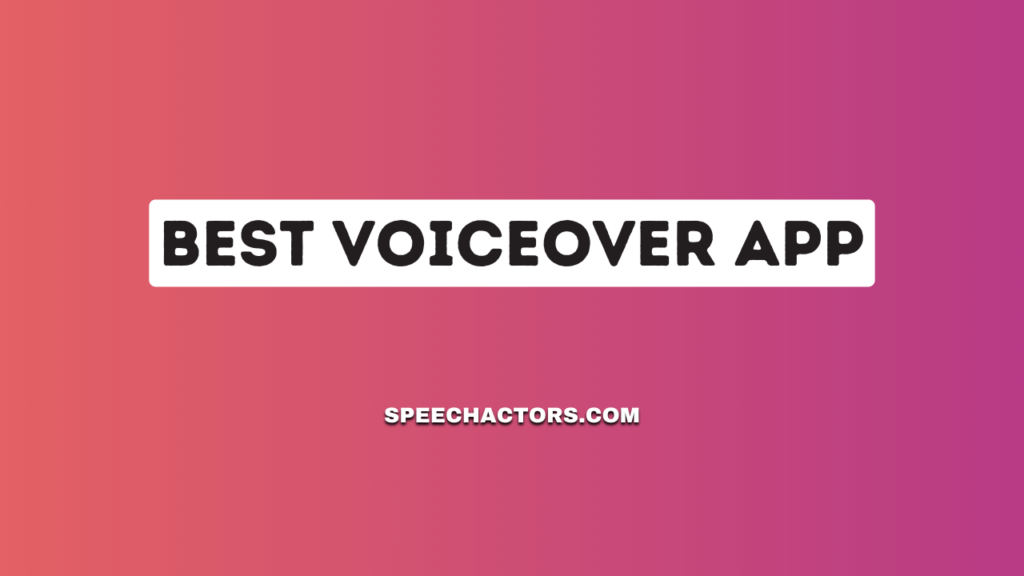Need to do a voice-over and looking for the right app? There are plenty of options out there, but not all of them are great. Some are better for quick projects, while others offer professional-level features.
In this list, we’ll share the 10 best voice-over apps to fit various needs. We’ll explain what sets each one apart, so you can pick the best one for your project. By the end, you’ll have a go-to app for all your voice-over work.
What is a Voiceover App?
A voice-over app is a tool that lets you add a voice to videos, animations, or other media. These apps can turn written text into spoken words using computer-generated voices. It’s like having a digital narrator for your content.
Many voice-over apps offer different voice styles and languages. So, whether you want a voice that sounds happy, sad, or excited, or one that speaks in English, Spanish, or Hindi, these apps can help. They’re great for making videos, presentations, or even just reading out loud.
10 Best Voiceover Apps
Whether it’s for videos, presentations, or animations, there’s an app here for everyone. Dive into the of the top 10 best voiceover apps.
1. Speechactors
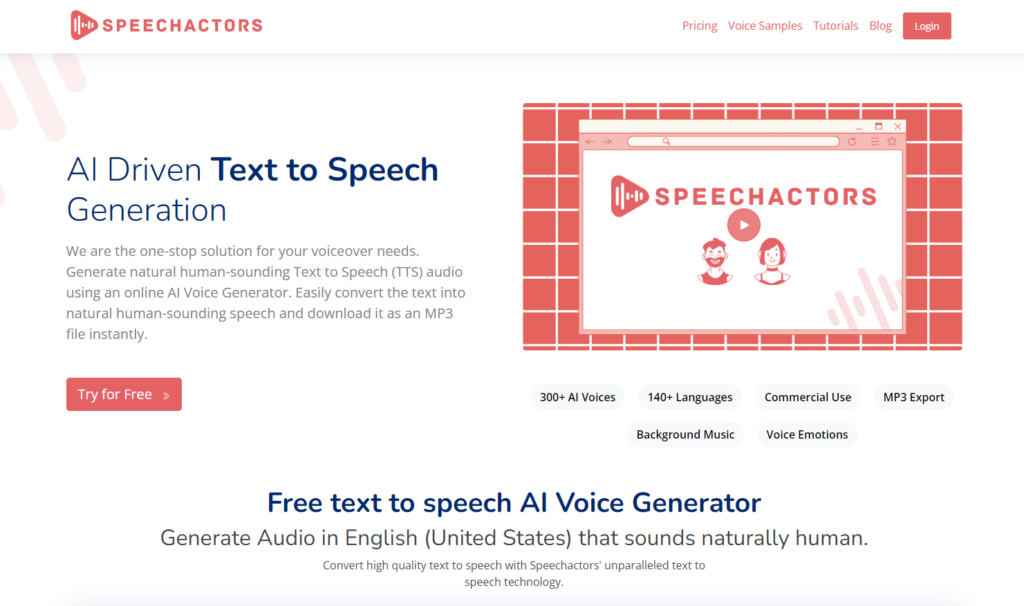
Speechactors is an online TTS AI platform that transforms written text into human like speech. Designed for simplicity and ease of use, it helps to a broad varieties of audience – from students to professionals.
Whether you’re looking to create a voiceover for a presentation or just want to listen to an article rather than reading it, Speechactors has got you covered. With a user-friendly interface, price offers and a variety of voice options, it stands out as a reliable choice for your Text-to-Speech needs.
Features
- It can produce over 300 AI-generated voices across 140 languages.
- It provides a variety of role voices inspired by movies, cartoons, anime, and even celebrities.
- Every language offers voice choices in male, female, and kids’ categories.
- It has various range of accents for different languages.
- The platform has voice emotions such as sadness, excitement, and anger.
Pros and Cons
2. Murf AI
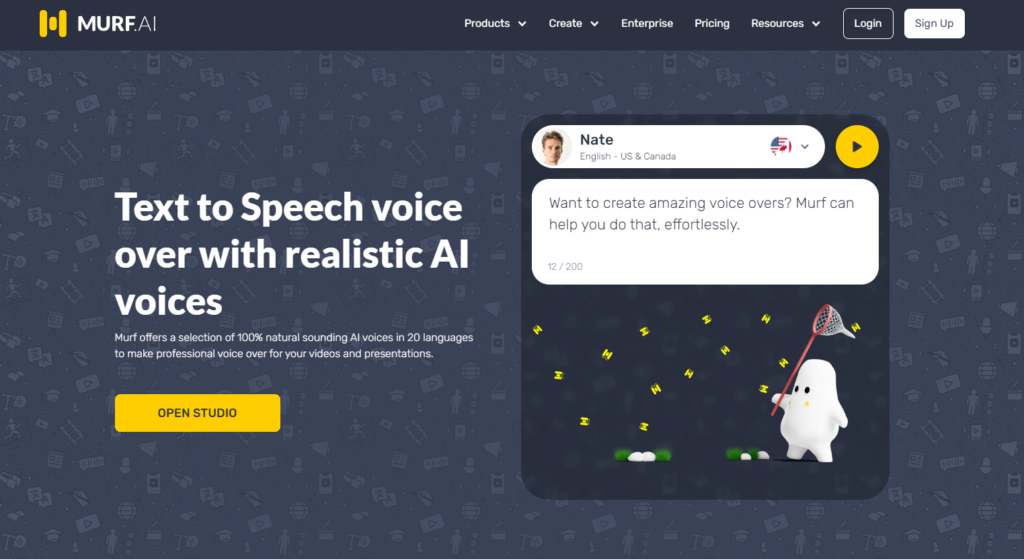
Murf Ai is a cloud-based platform that uses AI and deep machine learning to produce realistic text-to-speech voiceovers for various content, such as YouTube videos, podcasts, commercials, and e-learning materials.
With over 120 voices in more than 20 languages, it streamlines the traditional voiceover process, allowing users to quickly transform scripts into natural-sounding audio and even sync it with images, music, and videos all within the platform.
Murf offers a cost-effective and time-saving solution, making it easier for content creators to get high-quality audio for their projects.
Feature
- Natural voices that sound like real people.
- User-friendly interface No fuss, easy to operate.
- Collaboration of work with others seamlessly.
- Bring in or send out media/File handling.
- Supports many Languages with varied accents.
- Customizations to Make it fit your needs.
- Voice mimics to clone specific voices.
Pros cons
3. Logic Pro
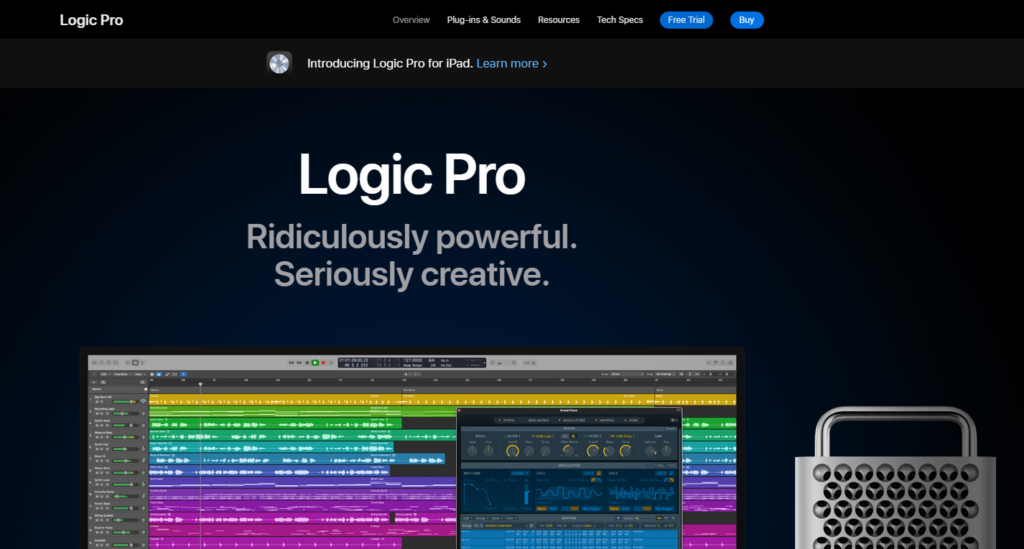
Logic Pro is a top audio tool. It’s known for its many features like sound effects, voice changes, and easy music-making. It’s user-friendly but still very professional. People can use it to make beats or songs easily.
Logic Pro is great for many types of music. It works well with different instruments, especially for dance music. However, only Mac users can use it, and it’s mainly for music makers.
Features
- The new Logic Pro X GUI (Graphical User Interface)
- Quick Help feature.
- Smart Control.
Pros and cons
4. GarageBand
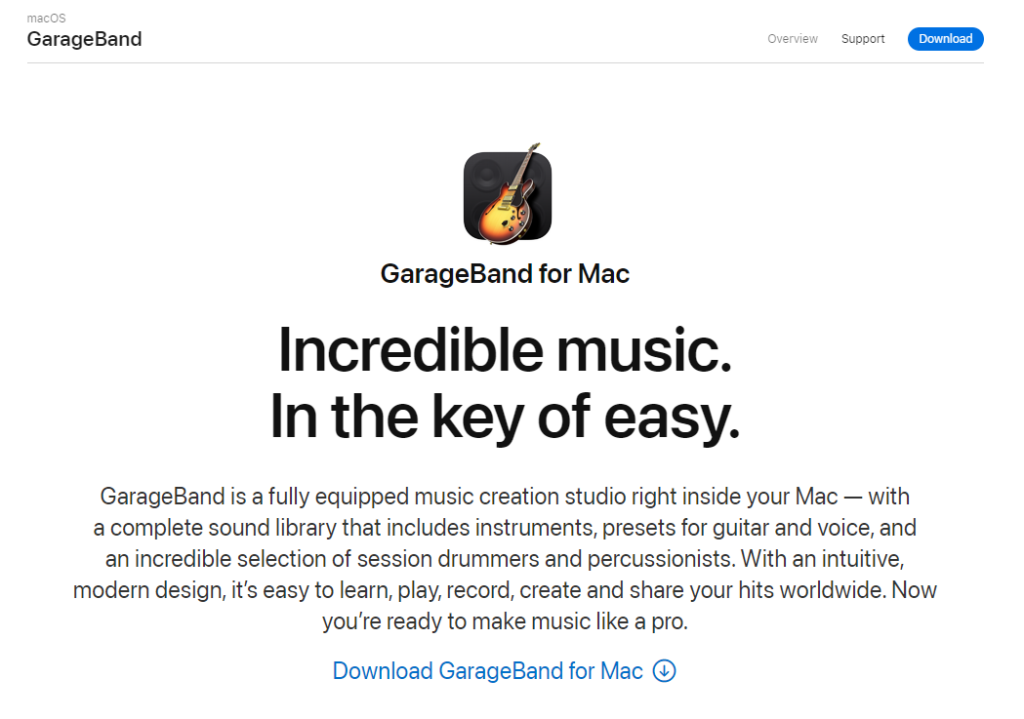
Apple devices like iPads or iPhones come with GarageBand. It’s a free, strong audio tool for Apple users.
You can record on multiple tracks and connect external mics like USB ones. It lets you edit by adding effects, cutting audio, and using multiple tracks.
If you’re new to editing, it might seem tough. But, this tool ensures top-notch recordings. You have control over audio quality and file types. For Mac users, it’s one of the best free choices.
Features
- Grid Layout displays rows and columns, where each cell holds a musical loop or sample.
- Real-time Mixing Function to mix and match different cells to create a unique sound.
- Loop Varieties so you can use drum beats, bass lines, melodies, and more.
- Multitrack Recording.
Pros and cons
5. Audacity
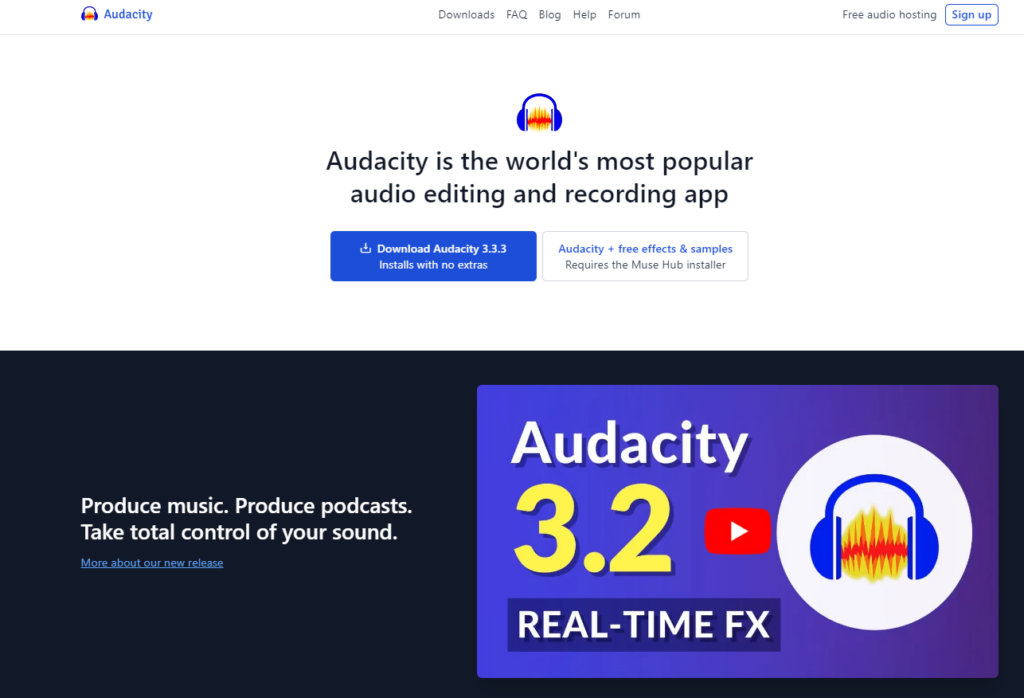
Audacity is a favorite for many because it’s free and works on Mac and Windows. Despite being free, it offers clear audio recording in various formats. Whether you’ve got a USB mic or another type, Audacity is compatible.
Beyond just recording, it has some neat effects to enhance your audio and handy editing tools to fix any hiccups. Great for beginners and pros alike!
Features
- Capture live audio on a PC.
- Turn music tapes into MP3 or CD.
- Edit sound types like MP2, MP3, and more.
- Combine or edit various sound files.
- Adjust sound speed or pitch.
Pros and cons
6. Speechify
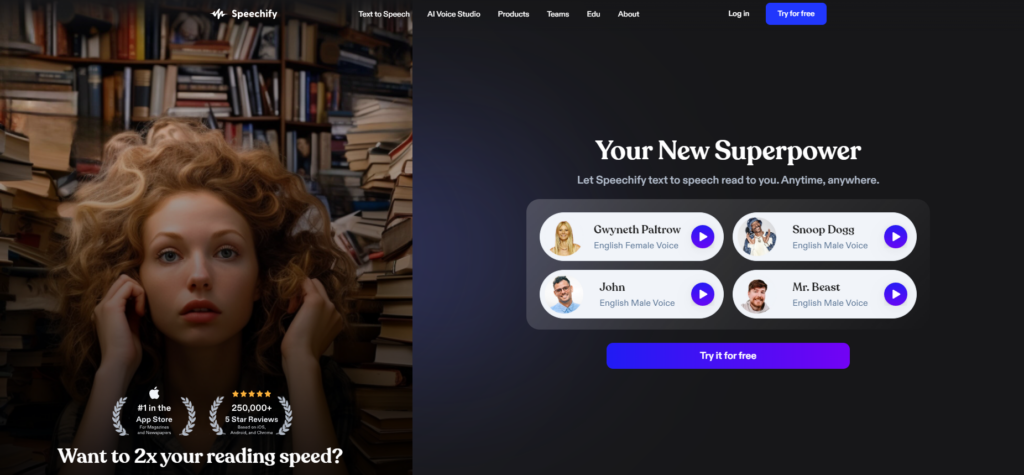
Speechify is a top voiceover app. You can get it on Google Play and iOS. It’s got over 200 voices in 30 languages. Plus, it even has Snoop Dogg’s and Gwyneth Paltrow’s voices.
Speechify can turn text from pictures into speech. People who use a lot of graphics love this. You can also add stuff from Dropbox, Google Cloud, emails, and more. It can read super fast, like 900 words in a minute.
Features
- Speechify lets you turn documents into audio.
- It reads web pages, PDFs, Word files, emails, and more.
- Snap a photo of text, and it’ll read it aloud, even offline.
- It’s available on Chrome, Safari, iPhone, iPad, Mac, and Android.
Pros and cons
7. TwistedWave
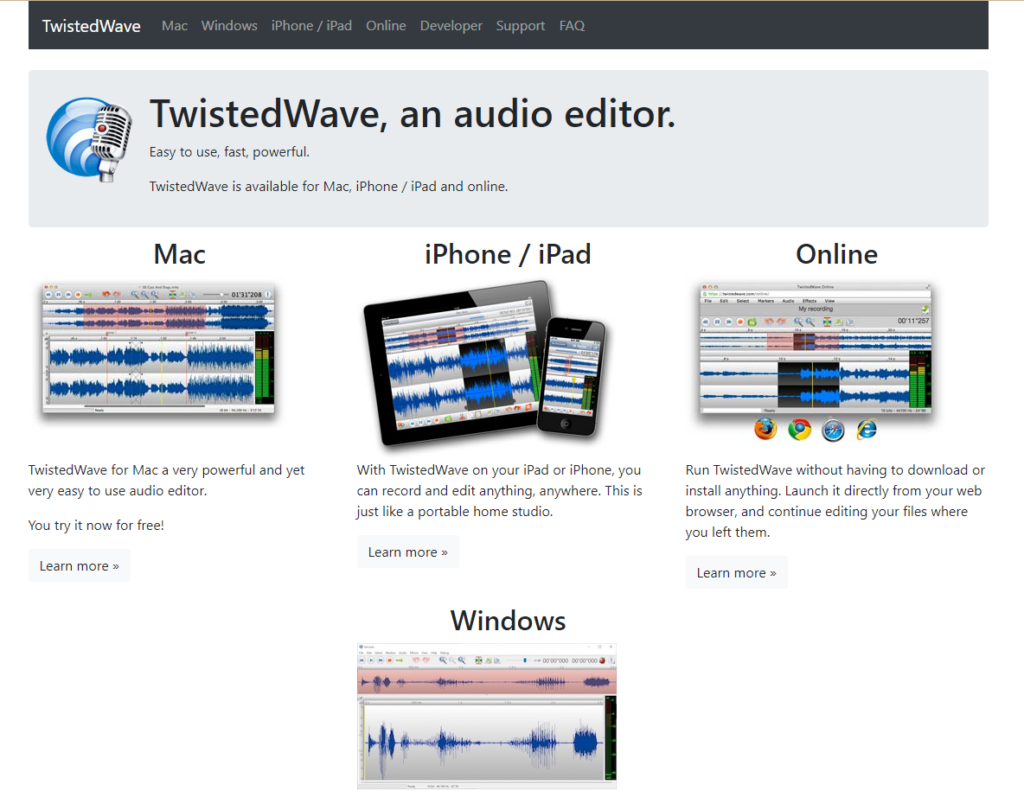
TwistedWave is an audio editing software. It’s used to record, edit, and process sounds. You can use it on Mac, iPhone, and online in a browser. Features include cutting, copying, pasting, and applying effects to audio files.
It’s handy for podcasters, musicians, or anyone working with sound. It has a simple interface, so it’s pretty easy to get started with. Whether you’re making small tweaks or big edits, TwistedWave can help. If you’re working on sound projects, it’s a tool to consider.
Features
- You can undo and redo actions.
- Listen to audio previews.
- Use fade in and out.
- There’s a normalize feature to tweak channels and levels.
- You can change the DB.
- Loop your audio.
- Supports many audio types.
- Use mono, stereo, or multitrack.
Pros and cons
8. Natural Reader

Natural Reader is a text-to-speech software. It converts written text into spoken words. People use it for various purposes like reading eBooks, PDFs, web pages, and documents out loud. It’s helpful for individuals with dyslexia, vision problems, or those who just prefer auditory learning.
The software comes with different voices in multiple languages. It’s available for both Windows and Mac, and there are also mobile versions. Apart from personal use, there are versions for educators and business professionals.
Features
- Scan text with OCR.
- Make audio files.
- Works with many file types.
- Use it on different platforms.
Pros and cons
9. Adobe Audition
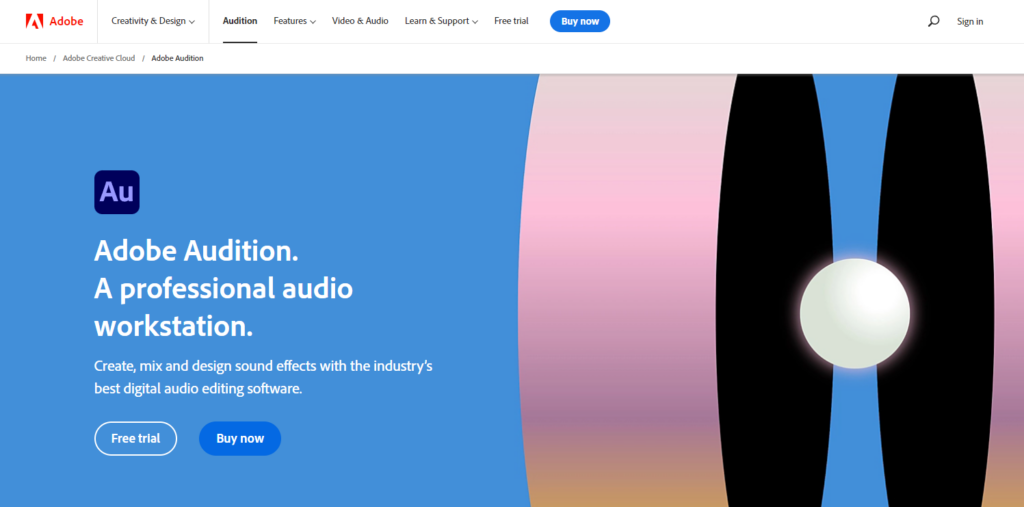
Adobe Audition is a digital audio workstation developed by Adobe Systems. It stands as a comprehensive tool designed for recording, editing, mixing, and mastering audio content.
The software is equipped with a range of professional-grade features. These include a multitrack, waveform, and spectral display for creating, mixing, and editing audio content. Adobe Audition is frequently employed in the production of radio broadcasts, podcasts, music, and more.
Features
- Capture and tweak sound clips.
- Make high-quality audio.
- Start a podcast.
- Adjust songs with Audition’s Remix to any length.
Pros and cons
10. PreSonus Studio One
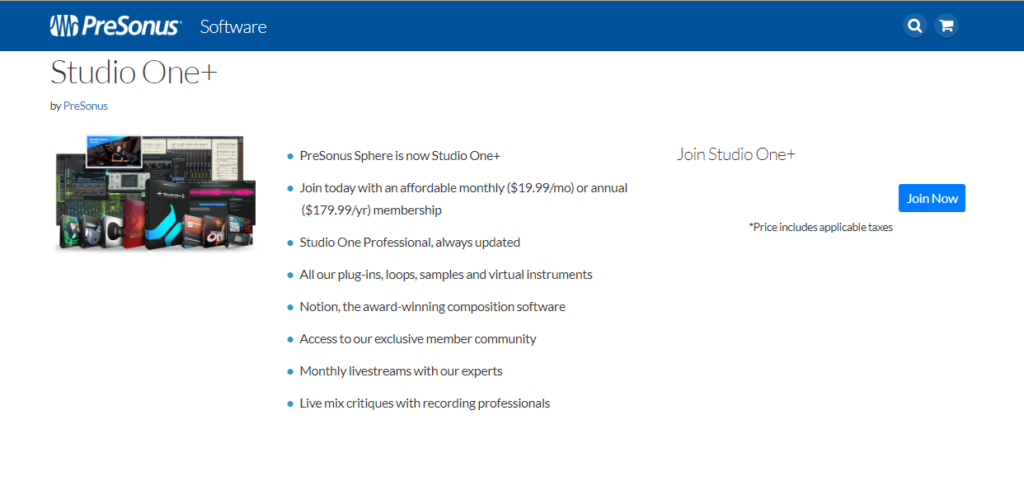
PreSonus Studio One is a digital audio workstation (DAW) developed by PreSonus, known for its intuitive single-window workspace, drag-and-drop functionality, and robust feature set.
The DAW stands out with its advanced features like the integrated Project Page for mastering, native 64-bit resolution, and support for up to 384 kHz audio. Another notable aspect is its unique “scratch pad” functionality, allowing users to test arrangements without disrupting their main projects.
Its compatibility with third-party plugins, coupled with its own suite of virtual instruments and effects, makes PreSonus Studio One a versatile choice for audio professionals across various genres and applications.
Features
- Chord tracking to know th exact positions.
- Impact enhancements to improve quality
- Pattern features to identify the patterns
- Sample One updates.
Pros and cons
FAQs
1. Are free voiceover apps any good?
Some free apps offer decent features and quality. However, paid apps usually provide more customization, better quality, and no watermarks.
2. Can I edit my voiceover within the app?
Most top-tier voiceover apps come with built-in editing tools for basic cuts, noise reduction, and audio effects.
3. Do voiceover apps work on both Android and iOS?
Some apps are available on both platforms, while others are exclusive to one. Always check compatibility before downloading.
4. How do I sync my voiceover with video?
Some apps offer video import and timeline features, allowing you to sync your voiceover directly within the app.
Conclusion
We’ve walked you through the top 10 voiceover apps for quality sound. These apps cover a variety of needs, whether you’re a pro in the voiceover field or just starting out.
Each app offers its own set of features that can make your voiceovers sound crisp and professional. Now that you’re aware of the best apps on the market, choosing the right one should be a lot easier.
